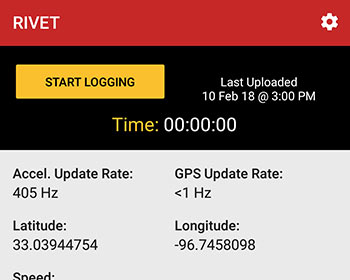

MPC Research Reports |
| Title: | Benefit Cost Analysis of Railroad Track Monitoring Using Sensors Onboard Revenue Service Trains |
| Authors: | Raj Bridgelall, Pan Lu, Denver Tolliver, Neeraj Dhingra, and Bhavana Bhardwaj |
| University: | North Dakota State University |
| Publication Date: | Dec 2021 |
| Report #: | MPC-21-446 |
| Project #: | MPC-549 |
| TRID #: | 01832696 |
| Keywords: | benefit cost analysis, crash analysis, derailments, monitoring, positive train control, railroad safety |
 Railroad accidents can cause economic harm that extends far beyond their own financial losses. As one of the most efficient modes of long-distance freight transportation, losses in line capacity and cargo due to accidents can disrupt the supply chain and lead to commodity shortages everywhere. Therefore, railroads are seeking affordable and effective safety technologies that can help to prevent accidents. However, uncertainties about the cost of those technologies and a general lack of knowledge about their potential performance are barriers to their adoption. This research applied several analytical techniques to gain insights about railroad accident characteristics and to assess the return on investment (ROI) from safety technology deployments. The techniques applied were exploratory data analysis (EDA), machine learning (ML), and benefit-cost analysis (BCA). The EDA revealed the trend that derailment accidents consistently approached 1,500 each year and that they accounted for more than 60% of the annual accidents. The EDA also revealed that the top three causes of accidents were human factors, track and roadbed problems, and mechanical failures. Annually, those causes on average accounted for 81% of the accidents. The ML revealed that derailment type accidents were statistically associated with lower track classes, non-signalized territories, and areas with restricted limits of movement authorization. The ML also revealed that derailments were typically the result of track and roadbed problems and generally not associated with human error. The BCA showed that achieving a positive ROI required railroads to seek additional ways to benefit from the deployed positive train control (PTC) system designed to reduce the risk of human-caused accidents. One such additional benefit could come from adding onboard sensors that can use the PTC network to communicate track and roadbed problems that increase derailment risks. Railroads can use the BCA models to evaluate the tradeoff in safety technology investments and payback period.
Railroad accidents can cause economic harm that extends far beyond their own financial losses. As one of the most efficient modes of long-distance freight transportation, losses in line capacity and cargo due to accidents can disrupt the supply chain and lead to commodity shortages everywhere. Therefore, railroads are seeking affordable and effective safety technologies that can help to prevent accidents. However, uncertainties about the cost of those technologies and a general lack of knowledge about their potential performance are barriers to their adoption. This research applied several analytical techniques to gain insights about railroad accident characteristics and to assess the return on investment (ROI) from safety technology deployments. The techniques applied were exploratory data analysis (EDA), machine learning (ML), and benefit-cost analysis (BCA). The EDA revealed the trend that derailment accidents consistently approached 1,500 each year and that they accounted for more than 60% of the annual accidents. The EDA also revealed that the top three causes of accidents were human factors, track and roadbed problems, and mechanical failures. Annually, those causes on average accounted for 81% of the accidents. The ML revealed that derailment type accidents were statistically associated with lower track classes, non-signalized territories, and areas with restricted limits of movement authorization. The ML also revealed that derailments were typically the result of track and roadbed problems and generally not associated with human error. The BCA showed that achieving a positive ROI required railroads to seek additional ways to benefit from the deployed positive train control (PTC) system designed to reduce the risk of human-caused accidents. One such additional benefit could come from adding onboard sensors that can use the PTC network to communicate track and roadbed problems that increase derailment risks. Railroads can use the BCA models to evaluate the tradeoff in safety technology investments and payback period.
Bridgelall, Raj, Pan Lu, Denver Tolliver, Neeraj Dhingra, and Bhavana Bhardwaj. Benefit Cost Analysis of Railroad Track Monitoring Using Sensors Onboard Revenue Service Trains, MPC-21-446. North Dakota State University - Upper Great Plains Transportation Institute, Fargo: Mountain-Plains Consortium, 2021.